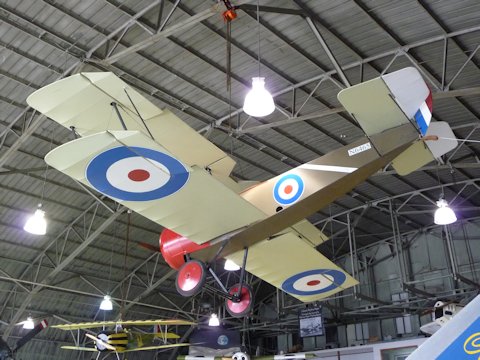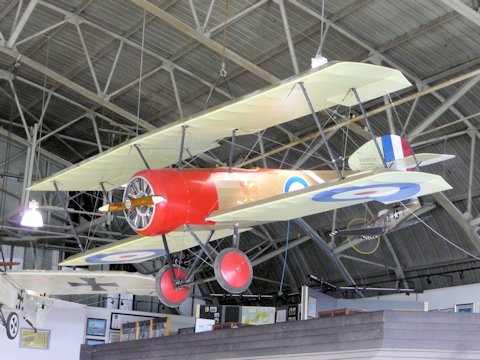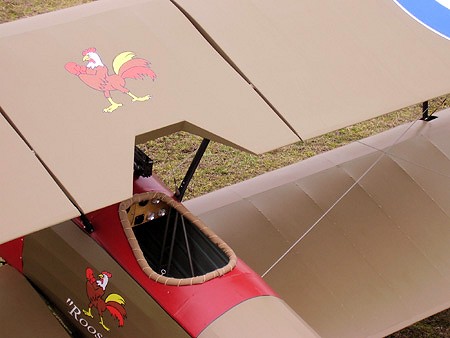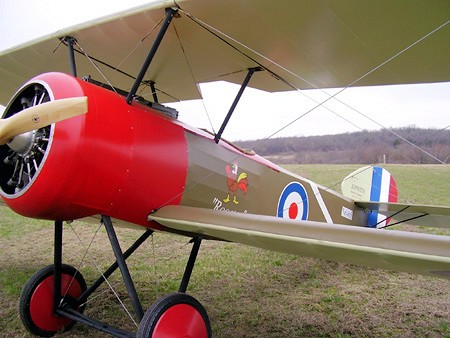Designed by Herbert Smith of the Sopwith Aviation Company, the Sopwith “Pup” (official designation Sopwith Scout) is a single seat fighter. Its excellent flight characteristics and maneuverability quickly won favor from its pilots. The first prototype flew for testing in February 1916.
After several modifications and imrovements, the first production Pups reached the Western Front in October 1916 with No. 8 Squadron RNAS, and proved successful, with the squadron's Pups claiming 20 enemy machines destroyed in operations over the Somme battlefield by the end of the year. Its good flight characteristics allowed it to successfully compete with enemy aircraft such as the Fokker scout and it was more than a match for any of the new German Halberstadt and Albatros biplanes.
“We instantly noticed the superiority of the new enemy aircraft over our machines” - noted Manfred von Richthofen.
The Pup's light weight and large wing area gave it a good rate of climb. In terms of maneuverability, ailerons were designed to both wings which increased its agility in the air. British Ace James McCudden stated that "When it came to maneuvering, the Sopwith Pup would turn twice to an Albatros' once ... it was a remarkably fine machine for general all-round flying. It was so extremely light and well surfaced that after a little practice one could almost land it on a tennis court."
Due to this feature the Pup was also used in many pioneering aircraft carrier experiments. On 2 August 1917, a Pup flown by Sqn Cdr Edwin Dunning became the first aircraft to land aboard a moving ship, the specially equipped HMS Furious.
Whilst the “Pup” nickname was never officially recognized it started the tradition of naming all further Sopwith aircraft after a bird or animal.
The combat life of the Pup was short and it was eventually outclassed by newer German fighters, but it was not completely replaced on the Western Front until the end of 1917. Remaining Pups were relegated to British Home Defense and Western Front training units. In all 1,770 Pups were manufactured by a triage of aircraft makers in the U.K.
This full scale model of a Sopwith Pup was donated to the Museum in Dec 2011 by the builder/owner Robert Baslee of Airdrome Aeroplanes in Holden. Baslee has built 20 different designs of World War I airplanes, including the Pfalz E1 which hangs in our Museum (Pfalz E1).











